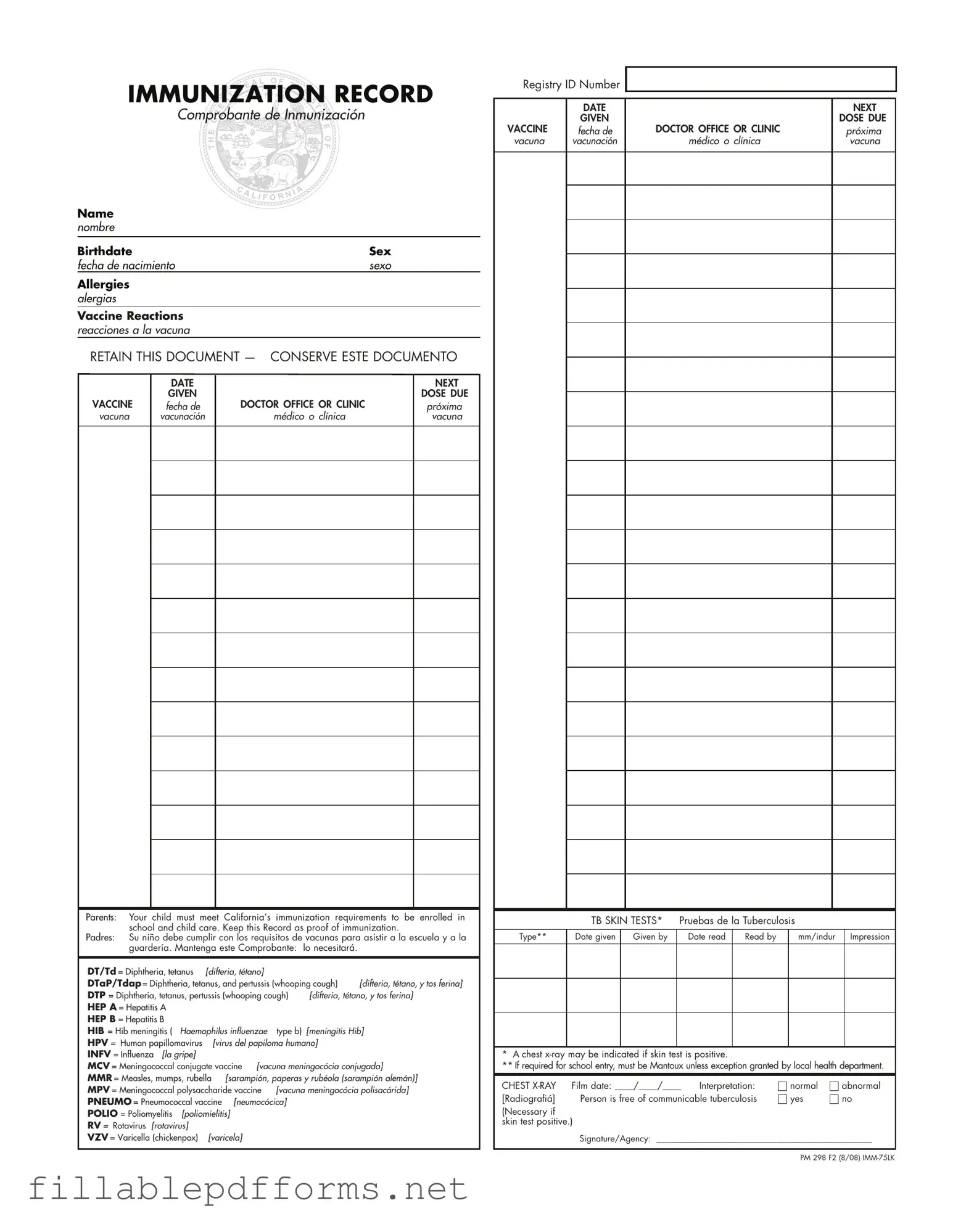The Immunization Record form is a crucial document for parents and guardians, serving as proof that children have received the necessary vaccinations to enroll in school and child care in California. This form includes essential details such as the child's name, birthdate, and sex, along with a section for allergies and any vaccine reactions. Each vaccination is meticulously documented, noting the date given, the next due dose, and the specific vaccine administered. Parents must keep this record safe, as it is required for school entry. The form also outlines various vaccines, from DTaP to MMR, ensuring parents understand what immunizations their children have received. Additionally, there are sections for tuberculosis skin tests and chest x-ray results, further emphasizing the importance of monitoring children's health. The Immunization Record is not just a piece of paper; it is a vital tool for safeguarding your child's health and ensuring compliance with state requirements.
